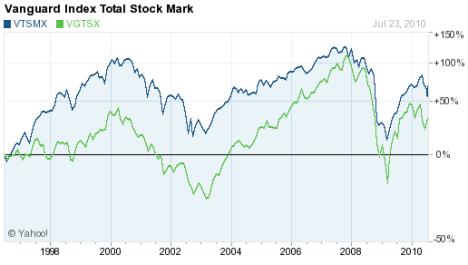Article
Investing for the Short Haul
Author(s):
In this type of sideways trading, the stock market can be something of a crap shoot. Here's a new approach on how to invest for those who will need their money sooner rather than later.
About 10 years ago my husband and I gave our granddaughter, then one year of age, a monetary gift under the Uniform Gifts to Minors Act (UGMA). The idea was that the money would grow tax free (up to a threshold) and then be used for her education. The level of earned income at which she would have to pay taxes in 1999 was $1,900, up to age 24.
So far, our granddaughter has never had to pay any taxes, because the earnings have been paltry. Additionally, the funds themselves have not budged above the original investment sum over almost 11 years. The account may have gained a bit here and there -- or lost, seemingly a lot more often -- but the sum of money in the account today is virtually the same as it was more than a decade ago. The funds were divided between two mutual funds: 60 percent in the Vanguard Total Stock Market Index (VTSMX) fund, a broad U.S. market mutual fund, and 40 percent in the Vanguard Total International Stock (VGTSX) fund. Each fund has low expenses and turnover compared to the industry.

This tells us a lot about the market -- it can unpredictable, something like a crap shoot. Since 2000, our gift for our grandchild lost almost one-half its value twice, once in 2003 and again in 2009. If she had needed the money during those years, it would have been insufficient. Although the funds recovered eventually, waiting is the problem -- not so much for the very young who have extended time on their hands, but for the old who don’t (and others, who may need to tap the money within a specified time frame).
This is why there is a new approach on how to invest money for those who will need it sooner rather than later. One approach would divide the savings into two piles: a.) The amount the investor can’t afford to lose; and b.) the amount the investor is willing to risk for potential gain.
Part A is invested in a savings vehicle with a high degree of safety, such as high-yield savings accounts or short-term government bonds. Part B is deposited in an appropriate asset allocation of higher-risk investments, such as stocks or mutual funds, depending on risk tolerance.
By dividing the funds up, it gives more peace of mind because the “safe” money is compartmentalized from the “crap-shoot” money invested in the market.
As financial researcher Lou Harvey, president and CEO of Dalbar, Inc., was quoted recently in Barron’s: “You can no longer afford to ignore the extraordinary volatility. Suspenders are not enough. You also have to have a belt.”
That belt is the safe money that the retiree or near retiree can’t lose -- the suspenders are the stock market.




